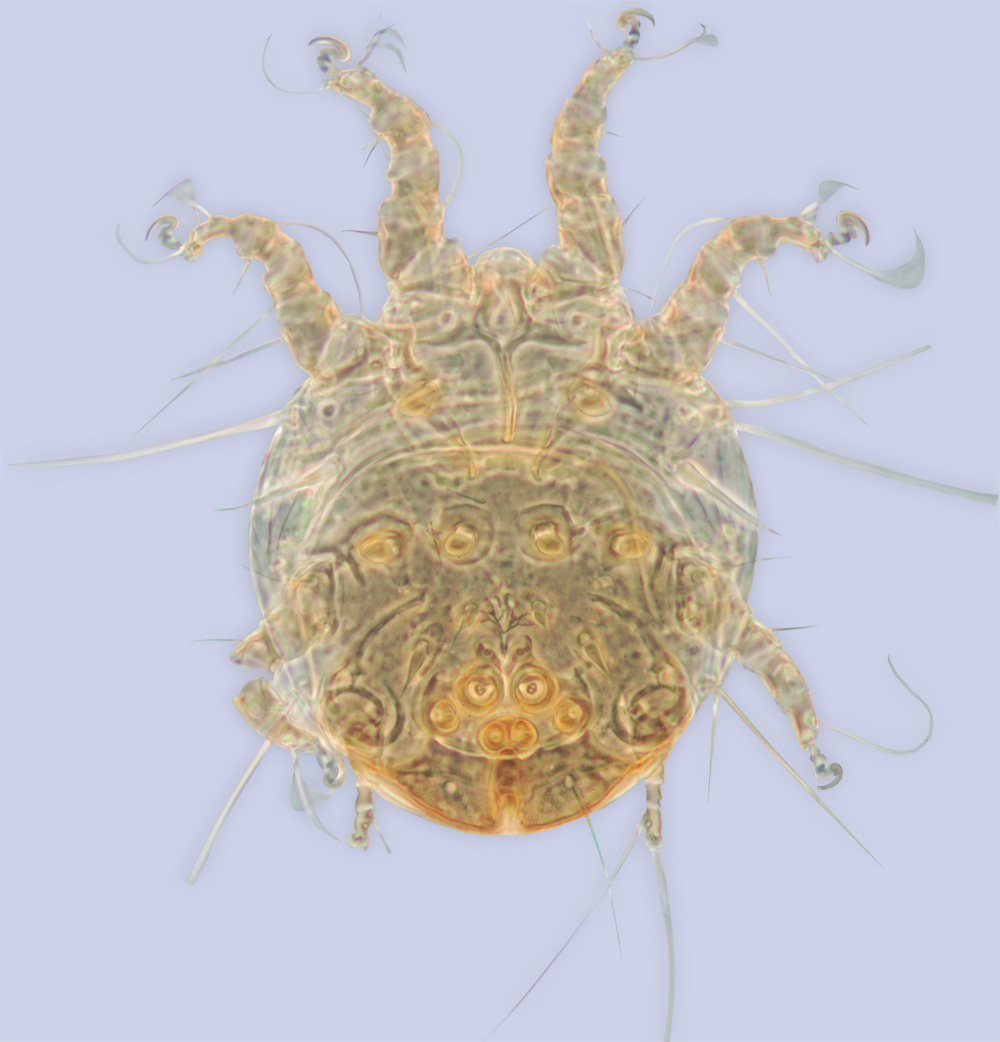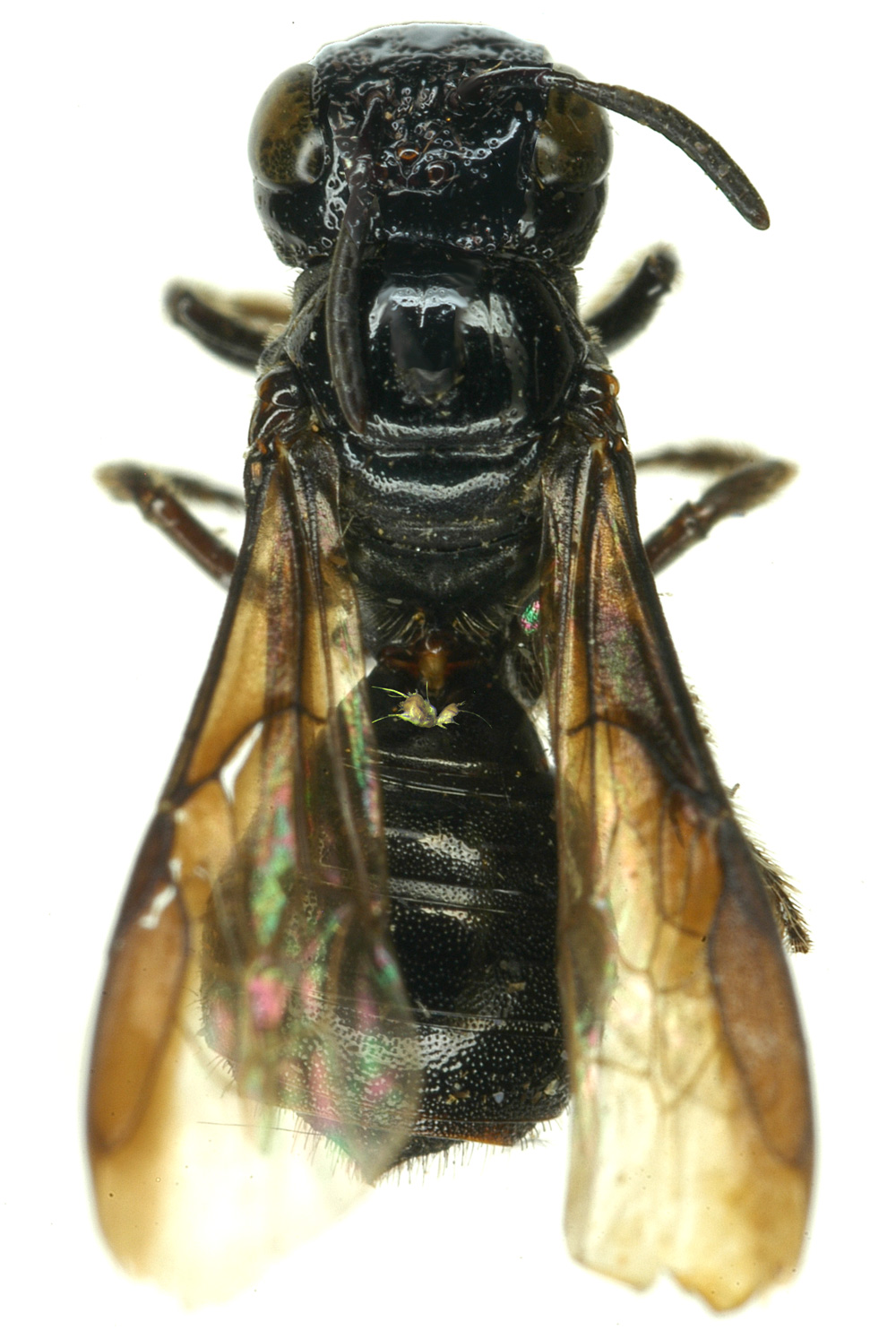
Fig. 1. Sennertia devincta, phoretic deutonymph, ex Ceratina sp., Peru (BMOC 03-0604-016).
Click here to enlarge
|

Fig 2. Phoretic deutonymphs of the mite Sennertia devincta near the entrance of the metasomal acarinarium of the bee, Ceratina sp., Peru (BMOC 03-0604-016).
Click here to enlarge
|
Bee Mites : Acari : Acariformes : Sarcoptiformes : Chaetodactylidae : Sennertia : Sennertia species
Sennertia devincta Klimov and OConnor 2007
Sennertia devincta Klimov & OConnor in Klimov et al., 2007b: 121, Figs 1, 7-8; Klimov & OConnor, 2008: 148 (included in key)
Material (show database records). Holotype. HDN - PERU: Huanuco, Tingo María, Monsón Valley, ex Ceratina sp. (metasomal acarinarium), 16.xi.1954, E. I. Schlinger & E. S. Ross, CAS, BMOC 03-0604-016; deposited in CAS. Paratypes: 2HDNs, same data, deposited in CAS, UMMZ.
Description. Deutonymph. Gnathosomal solenidia distinctly shorter than 1/3 width of femur I. Supracoxal setae scx situated on separate small sclerites. Hysterosomal shield distinctly expanded beyond opisthonotal gland openings and bases of setae f2. Lateral edges of hysterosomal shield in anterior part not narrowing, rounded. Dorsal hysterosomal pouch absent. Distance between anterior margin of hysterosomal shield and setae si exceeding diameter of si alveoli. Striate pattern of idiosomal cuticle outside hysterosomal shield without sclerotization; non-uniform at posterior end of hysterosomal shield, with two distinct areas. Striae long. Distinct vestiges of vi present, situated at level of se. Setae si distinctly posterior to se. Setae si slightly longer than se, as thick as se. Setae c1 long, nearly as long as se, distinctly longer than d1-h1, situated on anterior edge of hysterosomal shield. Setae c3 nearly spiniform, situated on small, weakly developed sclerite. Setae cp extending beyond bases of e2. Setae d1 and e1 similar in length to h1. Setae d1 situated on hysterosomal shield. Sclerite between ia and d2 absent. Setae e2 subequal with d2. Setae e2 not touching hysterosomal shield. Lateral opisthonotal gland openings situated on hysterosomal shield. Setae 1a, 4b, and 3a conoidal; g and 4a spiniform, with attenuated tips. Posterior apodemes II and anterior apodemes III partially fused. Anterior apodemes IV not interrupted, almost straight. Posterior apodeme IV present, not connected to anterior apodeme III. Conoids ps2 posterior to anterior transverse level of central suckers (ad1+ad2). Conoids ps2 anterior to ps1, situated outside outer level of ad1+ ad2. Suckers ad3 not enlarged, smaller than central suckers, without rough sclerotization. Posterior and lateral borders of attachment organ not forming distinct frame. Sclerotized rudiment of anterior cuticular suckers present, very small. Posterio-medial longitudinal hysterosomal sclerite present, long. Ventral hysterosoma smooth. Legs with setae pR I-II, sR III, wF IV, gT I-II, kT III filiform. Genual setae mG I-II simple, shorter than leg II, but longer than femur II. Tarsal setae la I-II microsetae. Tarsal setae ra I-II not bifid, spiniform. Tarsal setae wa I-II spiniform, bifid apically, s III spiniform, simple. Tarsal setae d I-II foliate, shorter than f I-II. Alveoli of tarsal setae d and f I not touching. Solenidion ω3 closer to f I than to ω1. Posterior condylophore present. Anterior condylophore I-II bent distally. Setae sR III extending beyond femur III. Seta d III apically shifted from tarsal base, distance distinctly exceeding diameter of d III alveolus. Leg IV extending beyond posterior edge of hysterosoma. Tarsus IV not enlarged, shorter than width of trochanter IV. Setae w IV almost half as thick as d IV, distinctly longer than leg IV. Setae w IV situated on middle of tarsus IV. Setae s IV present, very short. Setae wF IV not extending beyond tibia IV.
Variation. Sclerites of c3 may be indistinct.
Hosts. Ceratina sp.
Distribution (Show map). Peru (type locality).
Etymology. Devinctus (devoted, strongly attached) is a Latin adjective.
Biology. Found in the metasomal acarinarium of the host.
Image Gallery
References
Klimov, P. B. & B. M. OConnor. 2008. Morphology, evolution, and host associations of bee-associated mites of the family Chaetodactylidae (Acari: Astigmata), with a monographic revision of North American taxa. Miscellaneous Publications Museum of Zoology University of Michigan.199: 1-243.
Klimov, P. B., S. B. Vinson & B. M. OConnor. 2007. Acarinaria in associations of apid bees and chaetodactylid mites. Invertebrate Systematics.21: 109-136.
B. OConnor and P. Klimov ©
Created: May 26, 2011
Last modified: 

